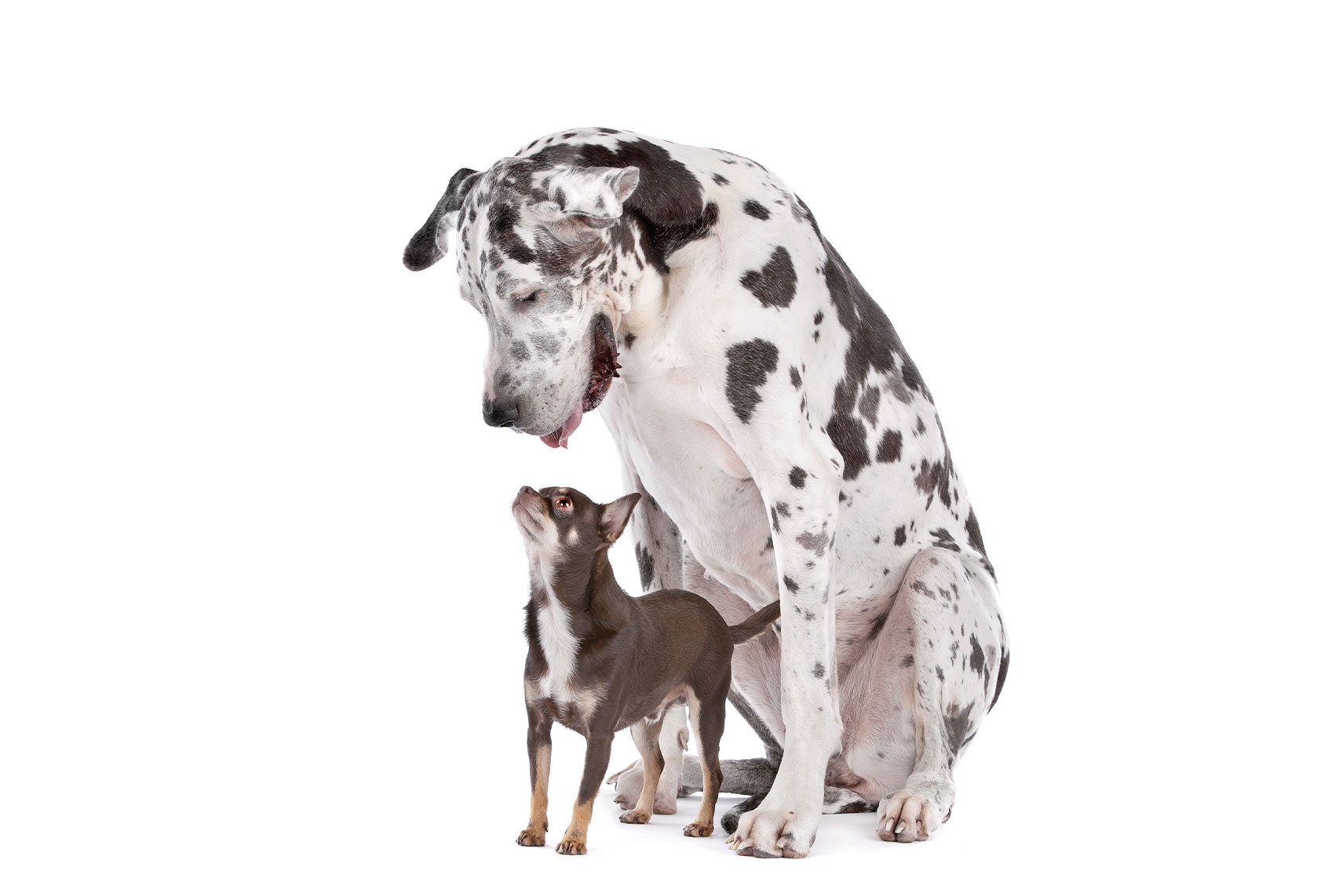Sometimes it is difficult to believe that all dogs are related. How can the tiny chihuahua be from the same species as the massive Great Dane? A male beagle is usually between 14 and 16 inches tall; a male English Mastiff can be as tall as 28 to 36 inches. One does not see similarly massive size disparities in other species, much less humans. (This would be the equivalent of adult humans regularly varying from two feet to six feet tall.)
Clearly there is something in the canine genetic code that explains this, just as doggie DNA has unlocked secrets regarding sled dogs, brachycephalic heads and self-domestication. For years scientists have attempted to solve the biological puzzle that can cause up to 40-fold size differences between dogs — and now, thanks to authors of a recent paper published in the journal Current Biology, we have the answer.
It all starts with a gene called IGF1, which regulates growth hormones and has long been suspected of playing a role in canine size variation. Scientists at the National Human Genome Research Institute of the National Institutes of Health compared variations in the region around that gene in dogs and wild canids with every imaginable body size. After doing so, they discovered that two alleles (or versions) of a single variant in a strand of long non-coding RNA, one that plays a role in controlling IGF1 protein levels. If dogs had only one copy of each allele, they tended to be medium-sized, but if they had two copies they would either weigh less than 15 kilograms (33 pounds) or more than 25 kilograms (55 pounds). That depended on which allele they had — and this further demonstrates that these genetic quirks are responsible for the drastic size disparities in dogs.
RELATED: Similar to humans, dogs’ personalities change over their lifetimes: study
Even more intriguingly, these alleles were present in wolves more than 50,000 years ago — long before humans domesticated them. Scientists in England and Germany found that the mutation existed in DNA from 54,000-year-old Siberian wolf fossils. Every modern canid species, from coyotes and foxes to jackals and wolves, has this mutation in their DNA.
Want more health and science stories in your inbox? Subscribe to Salon’s weekly newsletter The Vulgar Scientist.
“This is tying together so much about canine domestication and body size, and the things that we think are very modern are actually very ancient,” American geneticist Elaine Ostrander, one of the corresponding authors on the paper, said in a statement. She also referred to the fact that, although canids have always had the genetic tools to produce animals with wildly differing sizes, this did not happen on a widespread basis until the last 200 years — when humans began creating modern dog breeds.
“It’s as though Nature had kept it tucked in her back pocket for tens of thousands of years until it was needed,” Ostrander explained. While identifying the mutations responsible for size variation is a big deal, Ostrander told Live Science that there is still a lot more work to be done.
“The next step is to figure out how all the proteins produced by these genes work together to make big dogs, little dogs and everything in between,” Ostrander said.
Although there has not been as much controversy over breeding small dogs as there has been over breeding dogs with flat faces, they are still prone to health issues like intervertebral disk disease and tracheal collapse. They are also perceived as being more prone to behavioral issues, and scientists are still unclear as to why that seems to be the case.
“It could be a genetic association with small body size,” Dr. James Serpell, an animal behavior expert at the University of Pennsylvania, told Salon by email in August. “It could be because little dogs feel more threatened and defensive than bigger dogs and are therefore more likely to react aggressively. And it could be that the owners of small dogs are more protective of their pets and consequently fail to socialize them properly when they are young and impressionable. Or maybe it’s a combination of all three.”
More stories on dog science:

